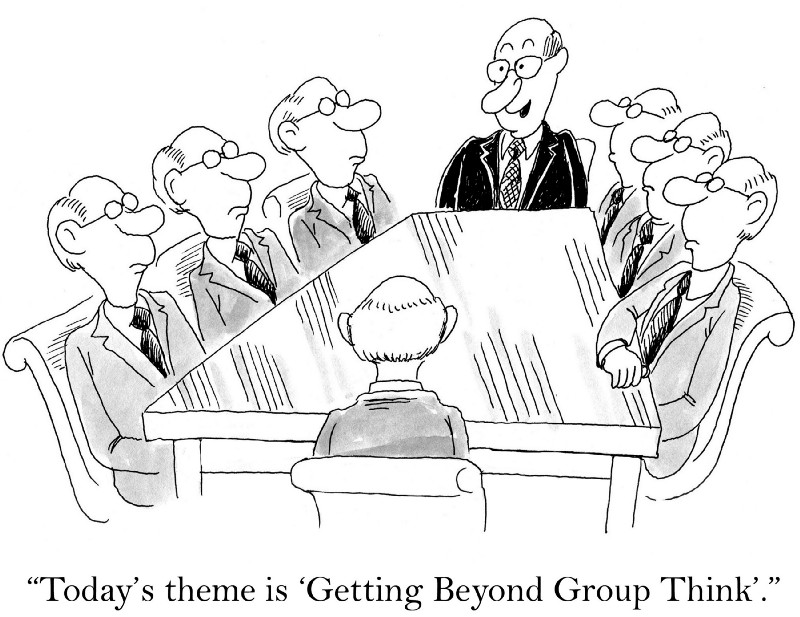Brains are wild. The more that I learn about the human brain and how it works (and doesn’t work), the more I start to hear that eerie and mysterious opening to Stranger Things.
Our brains have a hard time separating perception from reality, resulting in behaviors that are irrational or that we don’t even know are happening. These behaviors are a result of bias — a powerful, widespread, and unavoidable tendency or inclination toward something or someone. Bias is a given so long as we have brains…I’m hearing Stranger Things again…
But bias is frequently misunderstood, especially in the workplace, and its consideration is limited to people and identities, and bias education, training, and other programs are similarly limited to such implicit biases. We typically hear about bias in two scenarios: 1) Someone has a rooting interest (“My kid is the best, but of course, I’m biased.”) or 2) Someone has a prejudiced viewpoint on a political issue, or they are racist or sexist. These are common examples of bias that are discussed and highlighted in our daily lives.
What other types of bias exist that are especially detrimental in the workplace?
What is happening in the shadows of our subconscious that is slowly shifting the way we perceive and engage with others around us?
What drives down innovation, wastes time, and causes poor decision-making?
Understanding other types of bias empowers us to manage them, which will ultimately contribute to a more mindful — and productive — work culture. I start with two (especially impactful) types below, but the list is long and merits exploration and consideration (more soon on that).
Anchoring Bias
"I'm a pilgrim on the edge, on the edge of my perception. We are travelers at the edge, we are always at the edge of our perceptions."
— Scott Mutter
Anchoring is the idea that the first information absorbed creates a bias that impacts decision-making moving forward. We rely on anchoring every day to evaluate the world around us. For example, when choosing where you want to purchase a coffee you make an assumption on what the base price will be. We need anchors to create a base for comparisons, which can be the difference between overpaying or underpaying for a cup of coffee. However, in the workplace, the anchoring effect is stifling to innovation. Let’s say you have a team together for a product planning session, only this time an executive is present. The executive presents the first idea, which, coupled with her perceived status, has created a cognitive bias that the group will combat for the duration of the brainstorm. Everything is confined by the limits of the initial idea, and although you try, it is impossible for you to break-free from the weight of her initial contribution.
Groupthink
"So when at times the mob is swayed, to carry praise or blame too far, we may choose something like a star, to stay our minds and be staid."
— Robert Frost
Groupthink tends to arise within groups of similar backgrounds, which is particularly dangerous in a work setting. Take the product planning session example discussed above: A desire to arrive at the perceived desired solution without conflict prevents new ideas or knowledge from coming to the surface. The desire for conformity and efficiency derails a group from making the best (most rational) decision. This leads to the deterioration in a group’s ability to think creatively, build new mental models, and evaluate viable, better alternatives.

But I'm not biased, I swear...
These types of bias, along with dozens of others, have a significant impact on how groups function. It can be overwhelming when you start to uncover how humans operate, especially how our minds get in the way of rational decision-making, innovation, and productivity. (I remember feeling this same way when I started working on my company, Balloon, a few years ago to tackle this problem.) Grouping all of these types of bias into one thing and then associating that thing with a million negative connotations doesn’t help. It simply allows people to say things like, “I’m not biased” or other inaccurate, entirely impossible, and harmful statements.
So, how do we combat these biases? Knowledge is power. Understanding and bringing awareness to the complexities and realities of bias is the right first step. For this, I lean on the research. Luckily, bias has been studied for 20+ years, so exceptional scientists and researchers have published endless studies that are focused on helping us work smarter together.
Changing the way we communicate in-person, and leveraging technology to support that communication, is the right next step. Simple tactics include making sure the leader of the group does not always kick-off discussions, rotating conversation leads to inspire leadership throughout the team, and making sure everyone in the room has an opportunity to participate. Work environments are dynamic, and creating opportunities for anonymous feedback is an important way to calibrate the health of a group. We can’t completely eliminate bias, but tech solutions can mitigate and help us drive more inclusive innovation, better decision-making, and saved time and resources. Solutions are all around us, but we have to first discover the best path to them.
This article originally appeared on LinkedIn’s Company Culture feed.
